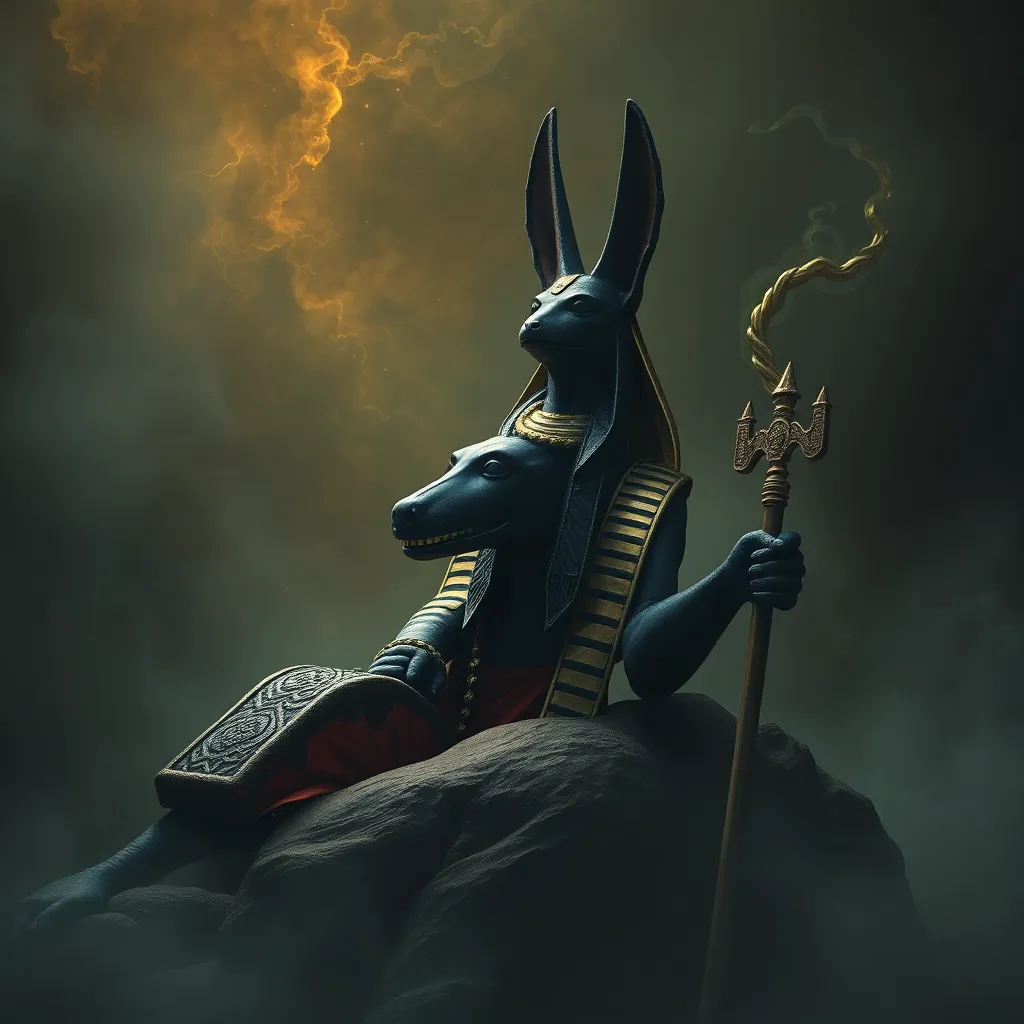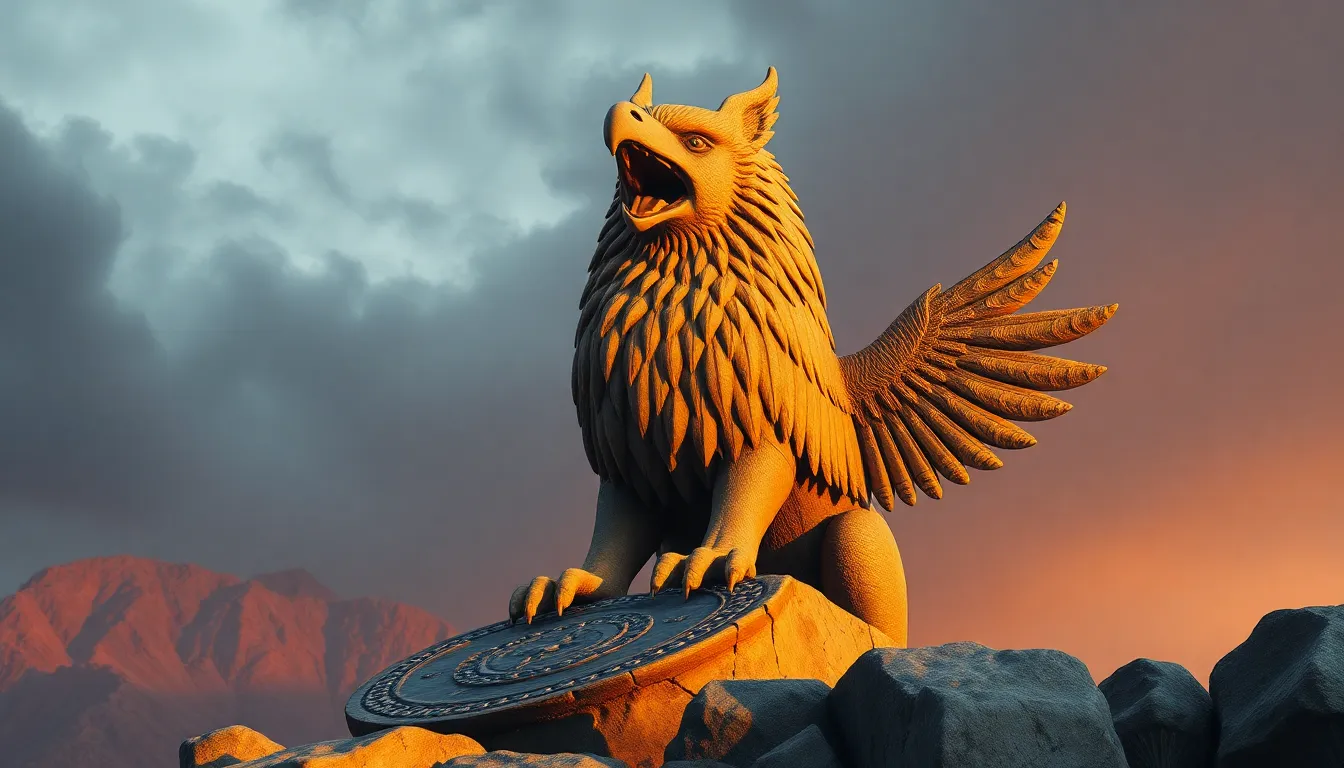Anubis and the Ancient Egyptian Beliefs About Death and Eternity
I. Introduction
Ancient Egyptian civilization was deeply rooted in the belief of an afterlife, where the soul continued to exist beyond death. This belief system encompassed elaborate rituals, practices, and deities that guided the deceased through their journey post-mortem. Among these deities, Anubis stands out as a central figure associated with mummification and the afterlife.
As the god of the dead, Anubis played a critical role in the funerary practices of the ancient Egyptians, ensuring that the souls of the departed were protected during their journey to eternity.
II. The Role of Anubis in Ancient Egyptian Mythology
Anubis, often depicted as a man with a jackal’s head, is one of the most recognizable gods in ancient Egyptian mythology. His responsibilities primarily revolved around mummification and the afterlife.
A. Anubis as the god of mummification and the afterlife
As the god overseeing the embalming process, Anubis ensured that the bodies of the deceased were preserved for the afterlife. This preservation was vital, as the ancient Egyptians believed that the soul could not enter the afterlife if the body was not intact.
B. Symbolism and iconography associated with Anubis
- Jackal Head: The jackal was associated with cemeteries, often seen scavenging around graves, symbolizing Anubis’ protective role over the dead.
- Black Color: Anubis is often depicted in black, representing fertility and rebirth, as well as the rich soil of the Nile that facilitated life.
- Embalming Tools: Artworks frequently show Anubis with tools used in mummification, signifying his direct involvement in preparing the dead for the afterlife.
III. The Concept of the Afterlife in Ancient Egypt
The ancient Egyptians had a complex belief system regarding the afterlife, which encompassed various realms and stages that the soul had to navigate.
A. The journey to the afterlife: Duat and its significance
Duat, the Egyptian underworld, was a mystical realm where the deceased underwent trials after death. It was believed that the journey through Duat was perilous, filled with obstacles and challenges that tested the soul’s worthiness.
B. The importance of burial practices and rituals
Burial practices in ancient Egypt were intricate and vital for ensuring a successful transition to the afterlife. Some key practices included:
- Elaborate tomb construction
- Offering of goods and food
- Ritual prayers and incantations
IV. Mummification: Preserving the Body for Eternity
Mummification was a fundamental aspect of ancient Egyptian funerary practices, aimed at preserving the body for the afterlife.
A. The mummification process and its religious significance
The mummification process involved several steps, including the removal of internal organs, drying the body with natron, and wrapping it in linen. This process was not merely physical; it had profound religious significance, as it was believed to prepare the deceased for eternal life.
B. Anubis’ role in guiding the deceased through mummification
Anubis was thought to oversee the entire mummification process. He was often invoked during the embalming rituals, guiding the priests and ensuring that the body was treated with the utmost respect and care.
V. The Weighing of the Heart Ceremony
One of the most significant events in the journey to the afterlife was the Weighing of the Heart ceremony.
A. Description of the ceremony and its significance
In this ceremony, the heart of the deceased was weighed against a feather, representing Ma’at, the goddess of truth and justice. If the heart was lighter than the feather, the soul was deemed worthy of entering the afterlife. If heavier, it faced annihilation.
B. Anubis as the judge and protector during the weighing process
Anubis played a dual role during this ceremony. He was responsible for weighing the heart and also acted as the protector of the deceased, ensuring that the process was fair and just.
VI. The Influence of Anubis on Ancient Egyptian Funerary Practices
Anubis’ influence permeated various aspects of ancient Egyptian funerary customs, making him an essential figure in their rituals.
A. Temples and shrines dedicated to Anubis
Numerous temples and shrines were built in honor of Anubis, where priests conducted ceremonies to appease him and seek his guidance for the deceased.
B. Artifacts and inscriptions that highlight Anubis’ role in funerary customs
Artifacts such as amulets, tomb paintings, and inscriptions often depicted Anubis in various roles, emphasizing his protective and guiding presence in the funerary process.
VII. Anubis in Popular Culture and Modern Interpretations
Anubis has transcended ancient mythology to become a prominent figure in modern culture.
A. Anubis in literature, film, and art
From novels to movies, Anubis appears in various forms of media, often symbolizing death and the mystery of the afterlife. His image has been used in:
- Films such as “The Mummy” series
- Video games like “Assassin’s Creed” and “Smite”
- Literature exploring Egyptian mythology
B. The lasting impact of Anubis on contemporary views of death and the afterlife
The figure of Anubis continues to resonate in contemporary discussions about death and the afterlife, often serving as a symbol of protection and guidance in the face of mortality.
VIII. Conclusion
Anubis holds a significant position in ancient Egyptian beliefs surrounding death and eternity. His roles as the god of mummification, protector of the deceased, and judge in the afterlife highlight the importance of proper burial practices and the spiritual journey after death.
The legacy of Anubis and the ancient Egyptian beliefs about the afterlife continue to intrigue and influence modern society, reminding us of the enduring human fascination with what lies beyond death.



